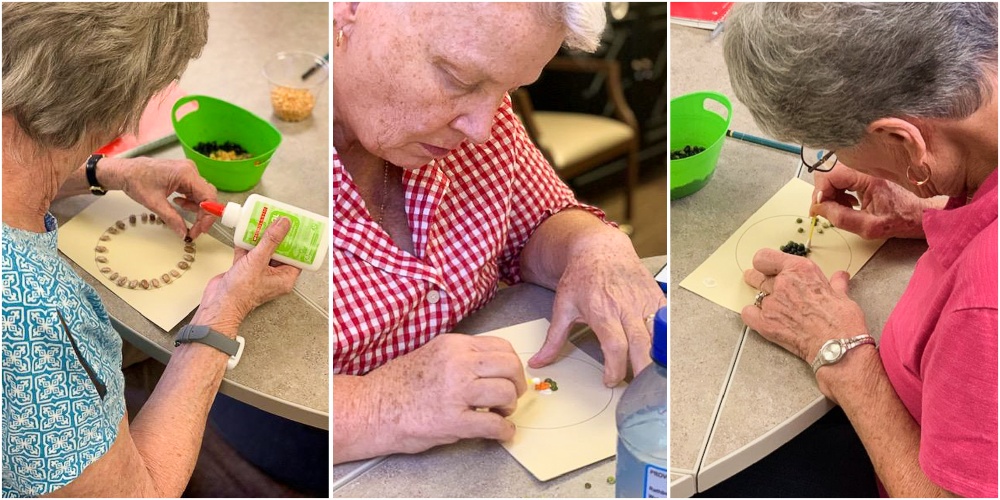Westwood Ridge residents unleash creativity in Caponi art classes
Amy Weiss | Jan 2, 2020
As Jeanne focuses on her watercolor project, she smiles. “These classes are fun,” she says. “And the instructor is patient when we’re learning something new.” During art classes at Walker Methodist Westwood Ridge, Jeanne and other residents take part in hands-on creative experiences hosted by Caponi Art Park. These classes have proven to be a wonderful form of art therapy for seniors.

An artistic history
In 1987 artist and educator Anthony Caponi started Caponi Art Park in Eagan, Minnesota. Moving to Minnesota from Italy in 1946 to study at the Walker Art Center and University of Minnesota, Caponi became a professor at Macalester College. As chair of the art department, he was influential in improving the way liberal art colleges taught art. Caponi invested in countless students through mentorships and courses. He loved teaching, even when it took time away from creating his own artwork.
After retiring, Caponi began building the 60-acre Art Park as a lasting legacy of his life and work. He believed creativity is part of everyday life, which motivated him to create a space for the public. The park—with its paths, sculpture garden, and outdoor amphitheater—is now a beloved part of the Eagan community. Because of Caponi’s dedication to making art accessible to all, the Art Park engages the creativity of more than 18,000 visitors annually.
Caponi on the road: Bringing art to Westwood Ridge
Caponi on the Road continues the Art Park’s mission of “restoring and nurturing the human spirit through art, nature, and community.” Thanks to funding from the Walker Methodist Foundation, artists from the Park come to Westwood Ridge to host workshops twice a month: one for memory care residents and the other for care suites residents. The artists work with caregivers to create programs appropriate for people with cognitive loss. The first project was a seed art mosaic. In another, residents created oil pastel drawings of still objects and used magazine clippings to make a free-form collage.
Cathy Schutt, foundation development specialist, said, “Art is an integrative therapy for those with memory or cognitive decline. It allows our residents to be creative and to have purpose going beyond basic care. Creating is powerful and therapeutic.”
Residents attend workshops off the unit in groups of 10 so they can create in a comfortable and focused environment, though some prefer to watch. The Caponi classes provide residents with a fun, approachable, and appropriate social program. Many residents were professional artists or have artistic hobbies and talents, so these classes allow them to engage in their favorite activities again.
“Some residents have lost the ability to self-initiate in the artistic process, and that can be hard,” shared Amanda Brakefield, assistant director of life enrichment at Westwood Ridge. “One resident was ashamed because her tremors prevented her from creating beautiful paintings like she did before. In these classes, her ability to create is no longer inhibited.”
Even residents who weren’t previously artistic take part in an activity that shows them they do have a creative spark. “It’s different from a craft group because it’s more about the creative process than the end result. Residents come up with ideas on their own,” said Amanda. “They share their creations with each other in positive exchanges.”
Finished with her watercolor, Jeanne said that she’s happy Westwood Ridge offers the classes, “especially in the winter.” Amanda hopes to bring art class participants to visit the Park in the spring.